Yves GARY Hits: 9497
Category: DESIGNERS
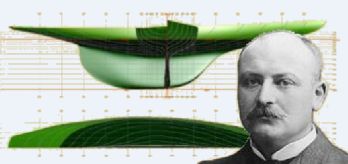 William Fife III OBE (15 June 1857 – 11 August 1944) was the third generation of a family of Scottish yacht designers and builders. He was born in Fairlie, North Ayrshire on the Firth of Clyde. This is where lies the family shipyard established in 1790 by his grandfather. He will live there until his death in 1944.
William Fife III OBE (15 June 1857 – 11 August 1944) was the third generation of a family of Scottish yacht designers and builders. He was born in Fairlie, North Ayrshire on the Firth of Clyde. This is where lies the family shipyard established in 1790 by his grandfather. He will live there until his death in 1944.
In 1875, after his studies at Brisbane Academy, he served his apprenticeship in the family yard.
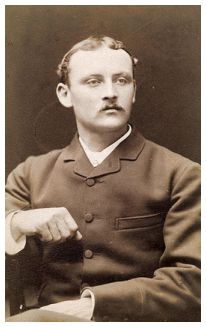 Then aged 19, he participated in the design and construction of several yachts. He wants to expand his knowledge of the use of metal in construction. In 1878, he was hired in the research department of manufacturers Fullerton and Company, Paisley in Scotland. He acquired a mastery of composite construction which was rapidly developing.
Then aged 19, he participated in the design and construction of several yachts. He wants to expand his knowledge of the use of metal in construction. In 1878, he was hired in the research department of manufacturers Fullerton and Company, Paisley in Scotland. He acquired a mastery of composite construction which was rapidly developing.
Clyde yards built with this many clippers technique. In 1885, the cutter GENESTA was the first participant to the America's Cup with a composite structure, many others followed. These hulls have a steel frame with wood-planking. The blacksmith then plays a role as important as the carpenter. This type of construction allows to obtain a high rigidity and good dimensional stability while reducing the weight of the frame. Sailboats as MOONBEAM IV are living examples of this type of structure.
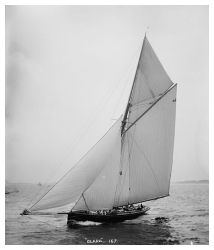 In 1881, Fife took over the management of the Culzean Ship Building and Engineering which belongs to his client the Marquis of Ailsa. Insufficient depth of water in front of the shipyard of Fairlie did not allow Fife build large vessels. In the Culzean shipyard, hulls up to 150 feet were launched.
In 1881, Fife took over the management of the Culzean Ship Building and Engineering which belongs to his client the Marquis of Ailsa. Insufficient depth of water in front of the shipyard of Fairlie did not allow Fife build large vessels. In the Culzean shipyard, hulls up to 150 feet were launched.
It is at Culzean that was built CLARA, a cutter of 63 feet length and 9 feet width ! The epitome of the "plank-on-edge" which so impressed and inspired US and Herreshoff. It was then that was born the international reputation of Fife. Shortly after, the small cutter VAGRANT was launched. This sailboat is still sailing, apparently, the oldest surviving boats designed by the Scottish architect.
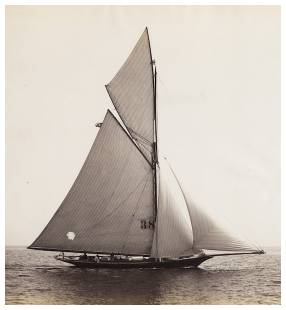 In 1886, Fife permanently leaves Culzean to devote himself entirely to the family shipyard of Fairlie. In 1887 during the America's Cup, William Fife accompanies George L. Watson who is the architect of the British challenger THISTLE beaten by the American defender VOLUNTEER. Fife will meet on this occasion many prospective clients and friends.
In 1886, Fife permanently leaves Culzean to devote himself entirely to the family shipyard of Fairlie. In 1887 during the America's Cup, William Fife accompanies George L. Watson who is the architect of the British challenger THISTLE beaten by the American defender VOLUNTEER. Fife will meet on this occasion many prospective clients and friends.
In 1888, Charles Tweed of New York ordered Fife the famous cutter MINERVA which so impressed the Americans. The same year, after the success of the 20 Rater DRAGON, Fife decided to use a stylized dragon as emblem. The golden dragon becomes the trademark of the Scottish architect. It will be carved the bow of all its boats.
 Fife designs two sailboats for the Thomas Lipton, who ran the America's Cup five times. Fife designs SHAMROCK (1899), which loses to Columbia (1899) and SHAMROCK III (1903), which loses to Reliance (1903). After the establishment of the first international gauge in 1906, Fife became a prolific architect of metric sailboats, especially in classes of 15 metre JI and 19 metre JI in the years before the First World War.
Fife designs two sailboats for the Thomas Lipton, who ran the America's Cup five times. Fife designs SHAMROCK (1899), which loses to Columbia (1899) and SHAMROCK III (1903), which loses to Reliance (1903). After the establishment of the first international gauge in 1906, Fife became a prolific architect of metric sailboats, especially in classes of 15 metre JI and 19 metre JI in the years before the First World War.
The Arctic explorer Jean-Baptiste Charcot was owner of many boats all named Pourquoi-pas ? (except the Courlis and the Français). No 2 was a Fife design, a schooner of 190 tons built in 1879 in Scotland. He performed with a tour of Ireland in the summer of 1900, revealing his exceptional talents of sailor (source Charcot of S. Kahn).
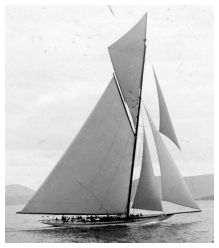 The French sailor Eric Tabarly, who owned the Fife Pen Duick (ex-Yum, 1898), spoke of the boats designed by Fife in the early decades of the twentieth century: "The great architects of that time were Herreshoff, Watson, Nicholson and William Fife. Among them, Fife has acquired a particular reputation for aesthetics and balance of its boats. In addition, those who took shape in its yard had unrivaled build quality."
The French sailor Eric Tabarly, who owned the Fife Pen Duick (ex-Yum, 1898), spoke of the boats designed by Fife in the early decades of the twentieth century: "The great architects of that time were Herreshoff, Watson, Nicholson and William Fife. Among them, Fife has acquired a particular reputation for aesthetics and balance of its boats. In addition, those who took shape in its yard had unrivaled build quality."
If Fife established a solid reputation in the field of racing yachts, his work also includes a number of cruising yachts. Dr. William Collier of Fairlie Restorations, Hamble, writing about the work of Fife in the 1920s, notes that during this period "[Fife] not only designed and built yachts metrics but also a series of good cruisers. This combination characterized the Fairlie shipyard during the period between the two wars. As Altair schooner, several cruisers entered the twentieth century, such Cicely (1902) and Suzanna (1906); Similarly, there was little difference between his ketches during this period. 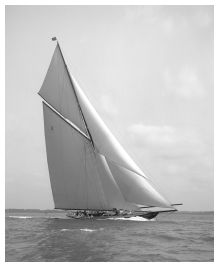 Perceived by some as anachronistic, these yachts were often considered to represent the pinnacle of cruising yachts."
Perceived by some as anachronistic, these yachts were often considered to represent the pinnacle of cruising yachts."
Fife shipyard also acquired a reputation for the extreme quality of construction of its boats. There are now just under 100 Fife boats still in existence; among them, about 50 still sail. Among the best known, there is Altair (1931), Belle Aventure (1929), Cambria (1928), Halloween (1926), The Lady Anne (1912), Moonbeam III (1903), Moonbeam IV (1920), Mariquita (1911), Tuiga (1909), Hispania (1909) and Mariska (1908) still racing in European regattas. In North America, the ketches Adventuress (1924) and Sumurun (1914) can be seen in New England..
Fife received the Order of the British Empire for his work. He died in 1944 without being married and childless; he is buried in Largs. The shipyard will continue under the leadership of his nephew but will never reach the fame he had met with William Fife.

 |
 |
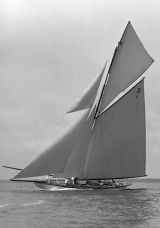 |
 |
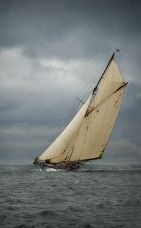 |
| PEN DUICK (1898) | SUZANNA (1906) | MARISKA (1908) | TUIGA (1909) | MARIQUITA (1911) |

William Fife — Wikipédia
- Fife versus Herreshoff - Atlantic Yacht Club
- William Fife III, 2004 Inductee - Herreshoff Marine Museum & America's Cup Hall of Fame
- William Fife III - Classic Yacht Info
- William Fife: Master of the Classic Yacht - Franco Pace - Google Livres
- Fast and Bonnie: History of William Fife and Sons, Yachtbuilders - Amazon.fr
- William Fife of Fairlie - Bute Sons and Daughters
- William Fife III. classic yachts for sale - Sandeman Yacht Company
- Category Archive for "William Fife" - Classic Sailboats
